Lose Weight by Running in your 30s: Definitive Guide
If you’re ready to lose weight by running, let’s dive in.
Chapter 1: Introduction to Lose Weight by Running

Congratulations on choosing to workout.
You can burn 300 calories in 30 minutes running but at a moderate pace.
You have a 90% chance of losing weight than walking.
An article published by Paul T. Williams supported it. He studied 50,000 runners and walkers. He found that runners have lost greater weight than walkers.
Running can help you drop 3% of body fat.
The study published in the International Journal of Exercise Science examined the records of 130 army recruits in Brazil.
The researchers studied their body compositions after three months of physical training that included running sessions.
They found that these recruits experienced a 3% drop in their fat percentage. They added a kilo of lean mass and shed 2 kg of fat mass.
But not all people who run will lose weight.
With that, it’s time for Chapter 2.

Chapter 2: Medical Clearance
Do you remember Ryan Shay?
If you don’t, then let me refresh your memory.
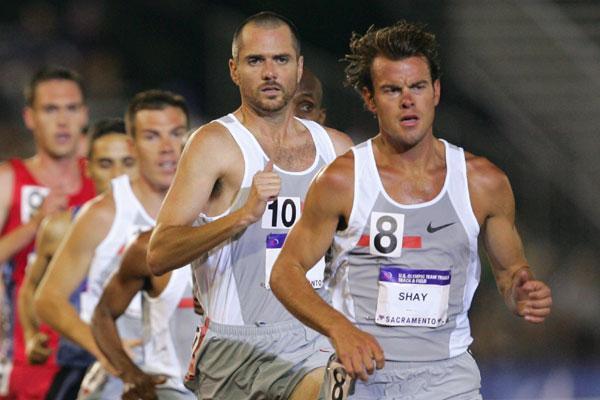
Ryan Shay was an American long-distance runner, who won numerous USA championship titles.
But during the US Olympic marathon trials in NYC in 2007, he collapsed 5 1/2 miles into the race.
The autopsy results stated that Shay died of “cardiac arrhythmia because of cardiac hypertrophy with patchy fibrosis of undetermined etiology.”
Now, I’m not discouraging you. Instead, you need to discuss with your doctor your running plan.
Running can elevate your heart rate. If you have an underlying heart condition, the risk of a heart attack during this physical activity is higher.
When you talk to your doctor, he can order a thorough medical examination. Heart check-up will be number 1.
You may not have symptoms yet. But if you have a weak heart, you could die while running.
Medical clearance before running is vital especially if you’re not normally active. It means that you’re living a sedentary lifestyle.
If you have been a couch potato for many years, you must talk to your doctor before starting a regular running program.
Even though the rate of having a heart attack while running is extremely low, it’s better to be safe than sorry.

What are the Typical Cardiac Health Tests?
1) Lipid Profile
This will tell whether you have high LDL or bad cholesterol. Having increased LDL can be detrimental to your heart.
2)Creatinine Phosphokinase or CPK test
It measures the enzyme creatine phosphokinase in the blood. Higher CPK means a muscle or heart injury. The injury can be aggravated by intense training.
3) ECG
It measures the electrical signals that travel to your heart. It can monitor the proper functioning of your heart.
Also, it can prevent sudden heart failure after running.
4) Calcium and Vitamin D tests
They are tests to measure your bone health. If you have low levels of Ca and Vitamin D, then you’re likely to experience ligament or muscle tear, or bone injury.
5) Kidney Function Test
Kidneys play a vital role in maintaining your blood pressure. Your kidneys must be functioning well before any intense training.
6) Liver function test
When you’re running, your body gets rid of the toxins. The organ that does that job is your liver. That’s why you must monitor your liver before running.
Your physician may order other tests not mentioned here.
But they’re the typical tests you need to undergo so your doctor can give you a clean bill of health.
With that in mind, let’s head over to chapter 3.

Chapter 3: The Equipment You Need
There’s no need for you to purchase a new wardrobe of running clothes.
However, if you think they’re vital as they can help you feel motivated, you can start with running shoes.
Check this out: Assumptions about running shoes and injuries are hogwash.
But…
Try walking long-distance in the wrong shoes and see what happens.
Yes, you’ll get injured.
It’s also the same with walking. You’ll get injured if your shoes are too small or big for you.
Possible Injuries Resulting in Running Wearing the Wrong Shoes

Toenail Loss
This happens if your shoes are too small. Your toes will experience too much pressure resulting in the blackening of toes.
Blisters
It’s the most common complaint of many runners. Blisters can be signs that your shoes are too small, tight, or narrow in certain areas.
In some cases, though, blisters can be avoided by trying different lacing techniques.
Find a technique that gives you a comfortable fit.
Heel Pain
When you run, your heels make contact with the ground. As you run more often, your heels will soon show signs of stress.
But you can avoid it by wearing shoes that offer sufficient cushion that can absorb the shock.
Make Your Run More Comfortable with Sweat-Resistant Clothes
What you wear during your run is as important as getting in regular exercise.
Yes, the clothes you wear can have a significant effect on your performance.
You’ll be sweating a lot as you run.
Wear breathable fabrics that can wick away moisture so you will feel cold and dry. It can make a difference in how you feel while running.
Once these items are ready, you should start planning your run.
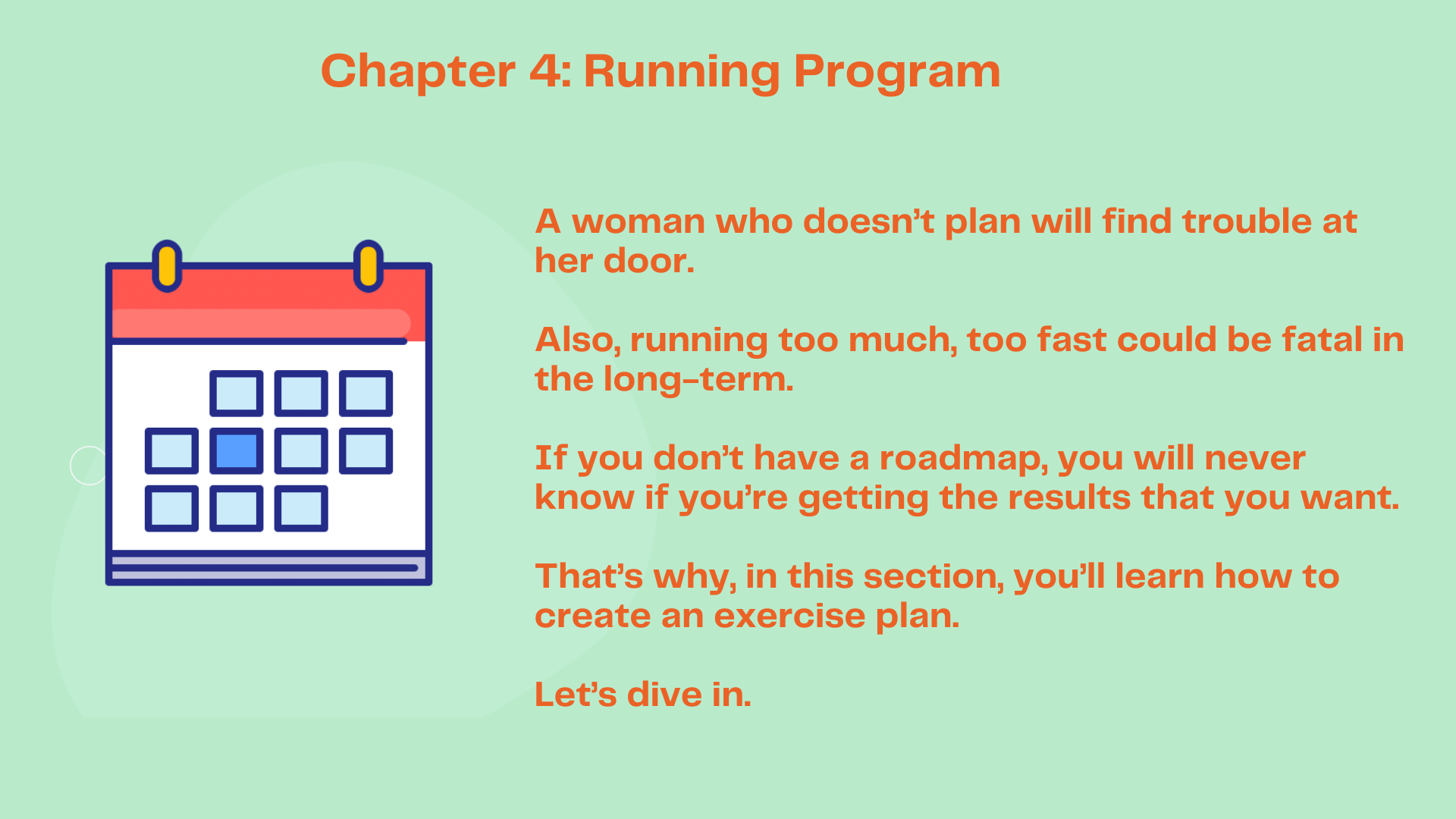
Chapter 4: Running for Weight Loss Program
Here’s the truth.
Burnout is your biggest enemy when you train.
With a solid plan, you know what to do tomorrow, the next day, next week, or even next month.
You must have realistic goals, though, so you can figure out how you can get there efficiently.
How Many Miles Per Day Should You Run for Weight Loss?
Before you create a plan for how long you must run, you must understand this first:

In a pound of fat, there are 3,500 calories.
If you run one mile, you’ll burn 100 calories.
Thus, to lose a pound of fat, you must run 35 miles.
But you can’t run 35 miles per day. You need to spread it across your weekly run.
In that case, you need to run 5 miles each day so you can lose a pound of fat within a week.
Then again, what you eat can still play a role in how much you can lose in a day or week.
Meanwhile, let’s start creating your weekly running for weight loss program.

Day 1 – The Most Overlooked Part of Running for Weight Loss
On your first day of the weekly running plan, you must rest.
A day without running, cardiovascular and strength training lets your body recover from any training you made.
If you didn’t train before, this is the day you can do meditation to help you prepare for your weekly run.
Although it’s your rest day, you can walk around. But nothing strenuous.
It’s also time for you to record your current weight and measure the following:
- Bicep size
- Chest size
- Hip size
- Neck size
- Thigh
- Waist
By measuring these things, you can track your progress. Even if you’re not seeing results on the weighing scale, you’ll see your progress in your body measurements.
Day 2 – Jumpstart Your System by Running 1 Mile If You Want to Lose Weight
This is your aerobic run day. It’s designed to kick your systems into high gear.
But don’t go too fast.
Your run must be 80% between easy and moderate pace.
Start relaxed to build up pace over 20 seconds. Finish it at the fastest pace.
Run for 30 seconds.
Then, walk for 2 minutes.
Repeat for the entire running session.
Day 3 Prevent Injuries by Strength Training
You must do strength training twice a week to prevent any running-related injuries.
For your strength training day, here’s a sample workout you can try.
Plank
Side Plank
Bird-Dog
Leg Lift
Glutei Bridge Lift
Day 4 Have Fun with Your 1 Mile Run
On this day, you can add faster sections but don’t push yourself.
Thursday run lets you explore a new trail or take photos of the views for Instagram.
Again, you must run for 30 seconds, then walk for 2 minutes. Repeat.
Day 5 Slow Day
Consider it as your rest day. However, you’ll still run. But you’ll do it slowly.
On this day, you’re keeping your heart rate low while boosting your turnover.
Day 6 Long-Run Day for 2 Miles
This is the time of the week when you increase your mileage.
Because it’s the long run, you must start relaxed before building up your pace. After you’ve built your pace, start running at a marathon pace effort.
This isn’t the same as the run/walk method that you did on the 2nd and 4th days.
On Day 6, you need to continuously run for 40 minutes to an hour or until you reach 2 miles.
Day 7 A Celebration of Your Accomplishment
At this point, your legs are tired.
You can either run for short miles but add a few hill intervals.
Or you can do strength training.
That’s your first week.
Repeat this schedule for the second week.
But instead of 1 mile, you must run for 2 miles on Day 2 and Day 6. On Day 4, it’s a short run of 1.5 miles.
In the third week, your mileage increases to 3 miles on Day 2 and Day 6.
For the fourth week, your mileage is now 3.5 miles twice a week.
You must still follow the schedule. Every week, you need to monitor your weight and your body measurements. Are you progressing or not?
You can continue to increase your mileage every week. But you must listen to your body.
Always keep in mind that overtraining is bad for your health. It increases your likelihood to get injured.
It’s especially true if you don’t warm-up before running or working out.
More on this in the next chapter.
So, that’s how you plan your training.
Earlier, I promised to give you the warm-up exercises you must do before you even start running.
Here it is.
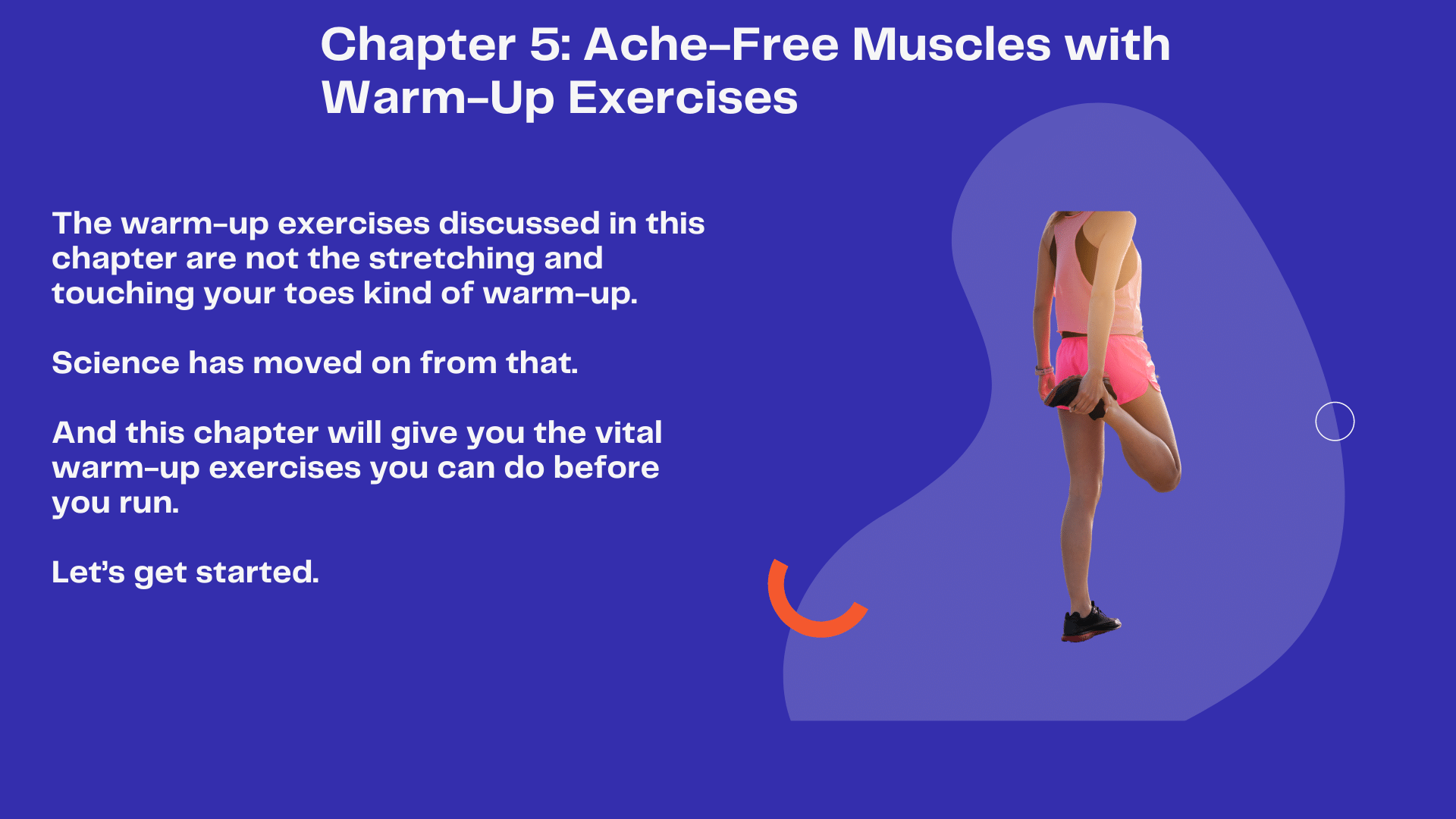
Chapter 5: Ache-Free Muscles with Warm-Up Exercises
According to a study about 36 athletes, the players who warmed up had the highest pain threshold. They also reported ache-free muscles.
Warm-up exercises are indeed vital.
But it’s dead wrong to hold a stretch for 30 seconds. This is known as static stretching.
It’s not useful. It actually weakens the muscles.
A study conducted at the University of Nevada, Las Vegas about athletes doing static stretching.
The results showed that the players who did static stretching generated less force from their leg muscles.
Also, it strains the muscles making them less responsive. They stay weak for 30 minutes.
It’s not something that you want before you run.
What’s the Right Warm-Up?
You must warm up by loosening muscles and tendons to boost joints’ range of motion. By increasing that, you’re warming up your body.
At the start of every run, you should perform each of these warm-up exercises for 30 seconds.
1) Quad and piriformis walk
2) Hip opener
3) Arm circles
4) Frankenstein walk
5) Scorpion
6) Handwalks
There you go. These are the warm-up exercises you must do before running.
Now that you have planned your training and the warm-up exercises you must integrate, there’s another thing you must remember.
Your meal.
What you eat is as vital as your training.
This is especially true if your goal is to lose weight.
Remember that running alone won’t help you lose weight.
And that’s why you need to read the next chapter.

Chapter 6: Your Eating Plan
Here’s the hard truth.
You still can’t lose weight if you continue to eat more calories than what your body can burn.
Remember how much weight you can lose every mile? You can only burn 100 calories.
A pound of fat equals 3,500 calories. Thus, you must lose 3,500 calories just to lose a pound of fat.
By cutting 500 calories each day from your diet, you’d lose about a pound a week.
When you apply the nutrition principles to your meals, you can effectively fuel your body. They can help you get fitter and reduce your body fat.
The key here is to eat only nutrient-dense food to keep you healthy as your mileage increases.
Here are your breakfast options to Make Running for Weight Loss Effective
1) Crab and asparagus omelet (365 calories)
It’s easy to make as you only need to prepare it for 10 minutes and make it for 5 minutes.
To start making it, check out BBC Good Food
2) Tacos for Breakfast (391 calories)
This meal is for you, i.e. if you’re a taco lover. It’s a dream meal that only takes 10 minutes to prepare and 15 minutes to cook.
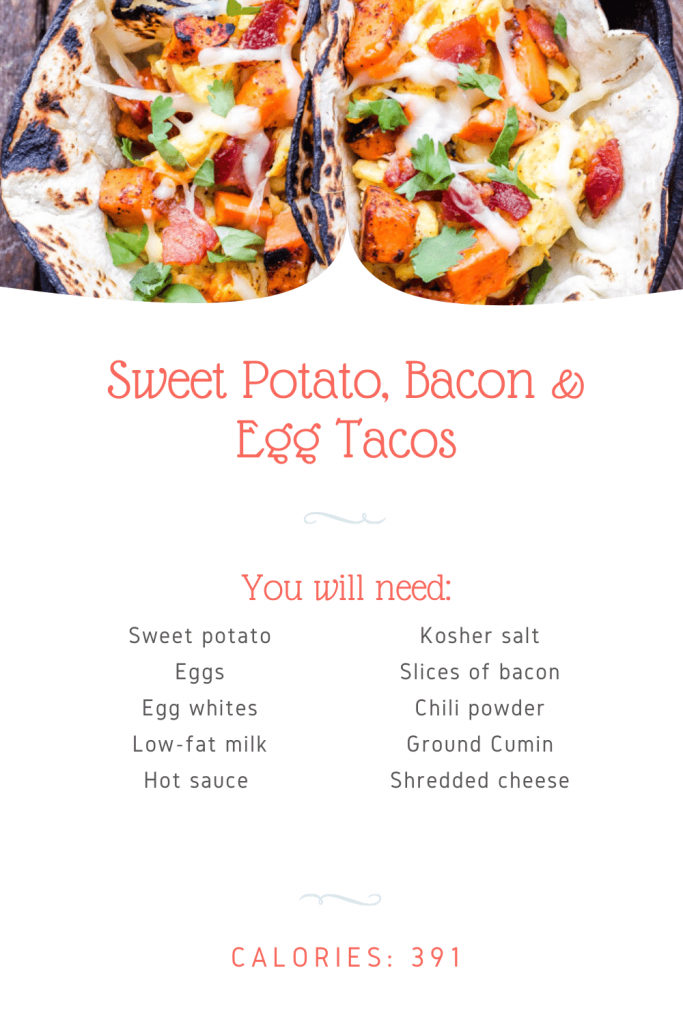
If you have these items, head over to Recipe Runner to learn how to cook it.
3) Runner’s Sandwich (365 calories)
As per hurrythefoodup.com, this sandwich hits every nutrition that you need after your run. That is, it’s rich in carbs, protein, and healthy fats, as well as electrolytes.

For the instructions, visit the Runner’s Sandwich.
Lunch Ideas to Fuel Your Day and Training
1) Chicken Wrap (300 calories)
This one is easy to make. It’s a healthy balance of carbs and protein. It’s also high in fiber because of the wholemeal wrap.
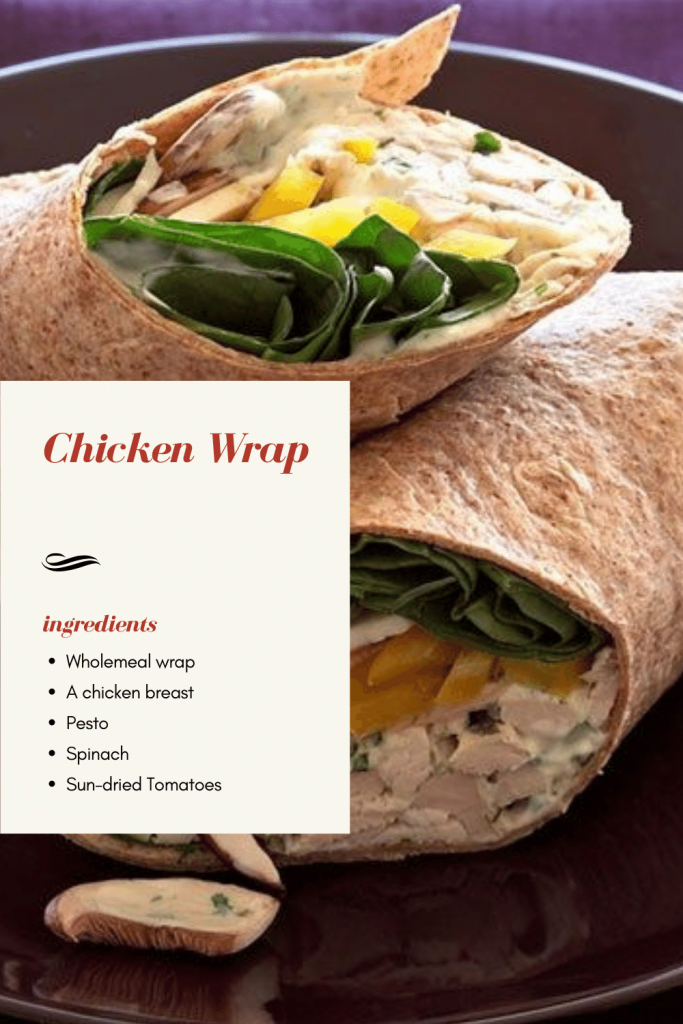
The recipe is found here at RunnersWorld.
2) Smorrebrod (315 calories)
This is a Danish recipe that can still be part of your meal plan. It’s loaded with shrimp and egg.

Want to try this out? Check out MyDanishKitchen.
3) Falafel Pita (409 calories)
It’s served with hummus and green salad. This recipe calls for chickpeas and some spices.
Hummus is great because it’s packed with vitamins and minerals. It’s also linked to impressive health benefits, like fighting inflammation.
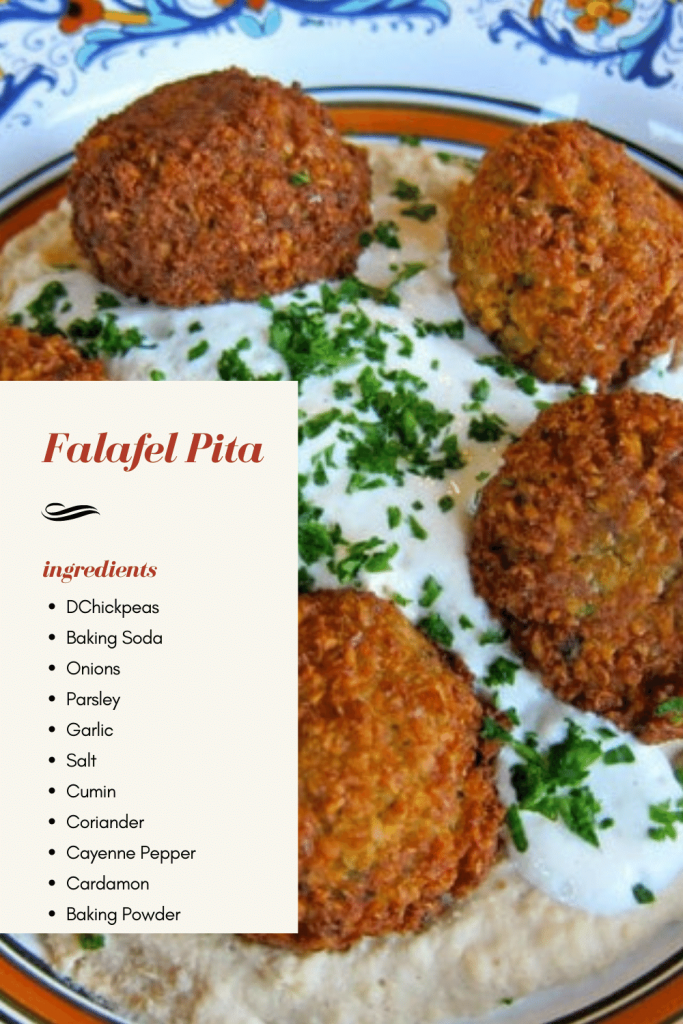
Before you proceed, though, make sure that you have a food processor and a skillet. For complete instructions, visit Toriavey.
Dinner Recipes After a Long Day
1) Sheet Pan BBQ Meatballs (360 calories)
This meal requires an oven and sheet pans. You’ll need one for the meatballs and another for the sweet potatoes. What’s more interesting about this meal is that your kids will love it.

For the instructions, go to TheLeanGreenBean.
2) Roasted Sausage with Marinara (170 calories)
It’s a low-calorie meal. Plus, it’s gluten-free. One more thing, it only takes 10 minutes to prepare it.

The photo itself makes you want to drool. Why not try this recipe yourself? Visit Nutritiouseats for the instructions.
3) Chicken Kale Spaghetti (337 calories)
This recipe requires whole-grain kinds of pasta because they’re healthy carbs. It’s served with a significant portion of veggies and lean protein. This is great after a long run because you need a lot of carbs to help you keep running. Women also need more carbs.

To try Laura Norris’ recipe, visit her blog at Lauranorrisrunning.
These are just some of the options you can try to fuel your body after a run.
Before a run, you only need an appetizer and not a meal. It must include protein and carbs. Your best and quickest options are the following:
Peanut butter sandwich
Low-fat chocolate milk
Protein shake or smoothies
When is the Best Time to Eat?
Why is this important?
Not eating before running is a big mistake because you’re not fueling enough to keep you going.
That’s why you must eat before you run so you have the energy that you need for your session. You can also avoid upsetting your stomach.
After running, you must eat 15 minutes of stopping. It can help in re-synthesizing muscle glycogen. It also helps you recover quicker.
How about snacks?
Since your goal here is to lose weight, try to avoid snacking.
Each time you snack, it increases your insulin level. Even if your snack includes fruit and nuts, these foods can still increase your insulin.
The bottom line is that snacking will keep the insulin levels elevated. It means that your body will readily store fat.
You just have to avoid eating in between meals. That’s the reason you need to eat a satiating meal so you can avoid snacking.
Here’s another truth you must know.
Running can indeed help you stay healthy. However, you’re still likely to gain weight, even if you run 5 miles a day.
Why?
Remember that running causes your body to burn more calories. As it burns calories, your body gets hungry.
After your training, you may start pigging out. As a result, you’ll gain weight.
What’s the solution?
Count the number of calories you consume per day.
Although every mile of running can help you burn 100 calories, it doesn’t automatically mean you’re losing a pound of fat for every 35 miles that you log.
The farther and longer you run, the more you get hungrier, resulting in you to eat more.
If you eat more than what your body can burn, you’ll gain weight instead of losing weight.
That’s why you must log what you eat.
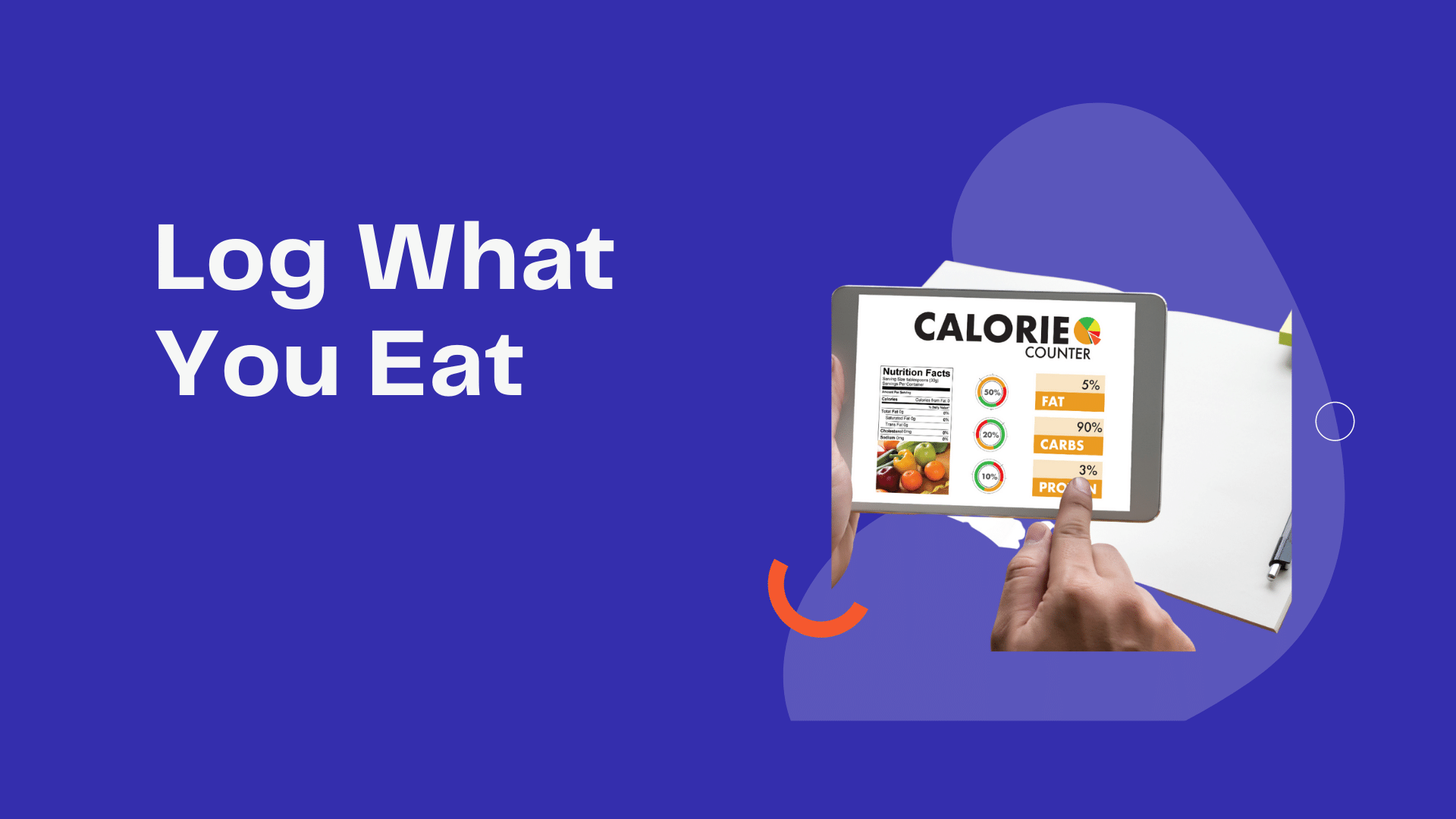
Since you’re now running per week, you are considered an active person. You can eat 1,500 calories each day if you wish to lose 1 pound of weight each week.
If you walk over 3 miles a day, you can consume 1,7000 calories to lose a pound of weight a week.
Unfortunately, it’s difficult to monitor your calorie intake. But a calorie counter that you can download for free online has been proven to be beneficial.
One of the calorie trackers I can recommend is Lose It. This app is pretty straightforward.
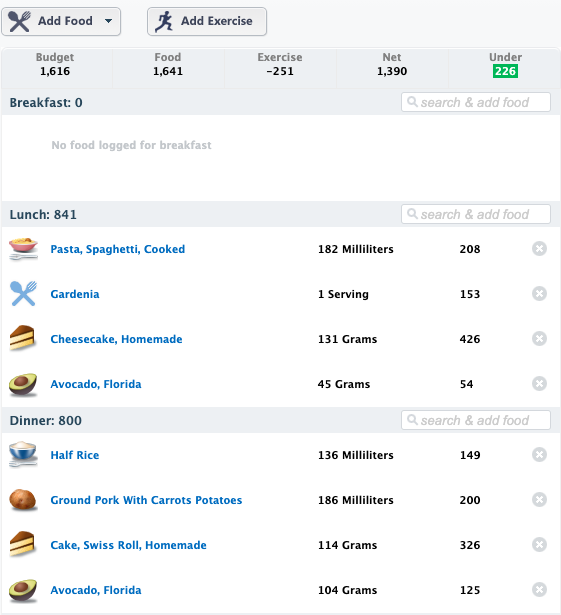
It’s easy to add nutrition detail from a food label. You can also manually add new food to the database.
The downside is that you need to weigh every food that you eat so you can get an estimate.
For instance, Lose It will give you calories for fried chicken. But the calories will depend on the weight of the food.
Thus, to get an estimate, you need to weigh it first so you can find out that a 118-gram fried chicken is approximately 267 calories.
By weighing the food that you eat, you will be surprised that what you thought was only 50 grams is actually 100 grams.
That’s why it’s so easy to overeat. If you don’t monitor what you eat, you can go overboard.
And it’s one of the reasons you’re not losing weight with running.
This leads us to the next chapter.

Chapter 7: You’re Not Losing Weight Because ….
As you start to run, you expect to lose pounds because of your effort.
After all, running can burn calories.
Wrong.
Eating More or Less Than What Your Body Can Burn
You indeed need to eat to have the energy to run and help you recover after. But it’s easy to reward yourself because of your effort.
This means that you’ll eat high in calories because you’ll rationalize that you’re going to burn extra calories when running.
It’s a huge mistake that many runners who wish to lose weight commit.
Another culprit is that you’re consuming sports drinks. These drinks can add to your daily calorie allowance. (100 grams of Gatorade = 11 calories)
On the other hand, you may be cutting a lot of calories because you wish to lose weight quickly.
But this is wrong.
You’ll lose weight quickly but your body will hold onto your fat.
When you use a calorie counter, you will know how many calories you can eat per day based on your age and height.
Then, there’s the muscle building
Because muscle weighs more than fat, you won’t see the scale to budge. That’s why you may think that you’re gaining a few pounds.
That’s why it’s important to monitor your body measurements. Your weight may not be changing but your bicep size or your hip size is shrinking.
Or you’re just eating a lot.
Ignoring Your Current Weight and Your Running Pace
Running can help you burn calories but not as many calories as you think.
It still depends on your current weight and the length of time you go for a run.
You may use this exercise calculator to give you an estimate of the calories you can burn during your workout.
So, for instance, if your current weight is 140 pounds and you run for 30 minutes at 6 miles an hour, you will only burn 318 calories.
But after running, you eat a low-fat cream cheese, which has 318 calories or 114 grams cheesecake which is around 370 calories.

In other words, you’re just returning the calories you burned through running.
That’s why having a calorie counter is a huge help.
On the other hand, you might just reach a certain level.
Reaching the Stage When You Stop Losing Weight
At a certain point, you’ll reach a weight loss plateau. This is the stage when the calories you’re burning now are equivalent to the calories you’re eating.
If you hit this stage, you can still lose weight by varying your routine.
Alternate running fast and walking slow. The short bursts can help in burning calories more quickly. It also increases your metabolisms.
You should also include more strength training exercises or run for a longer period.
Again, make sure that you look at your body measurements. You may need to further reduce your calorie intake and increase your running time and pace.
Conclusion
I know that it’s not easy to lose weight, especially when you’re in your 30s.
But if you know how to balance your physical activity and calorie intake, you’ll lose weight and reach your fitness goals.





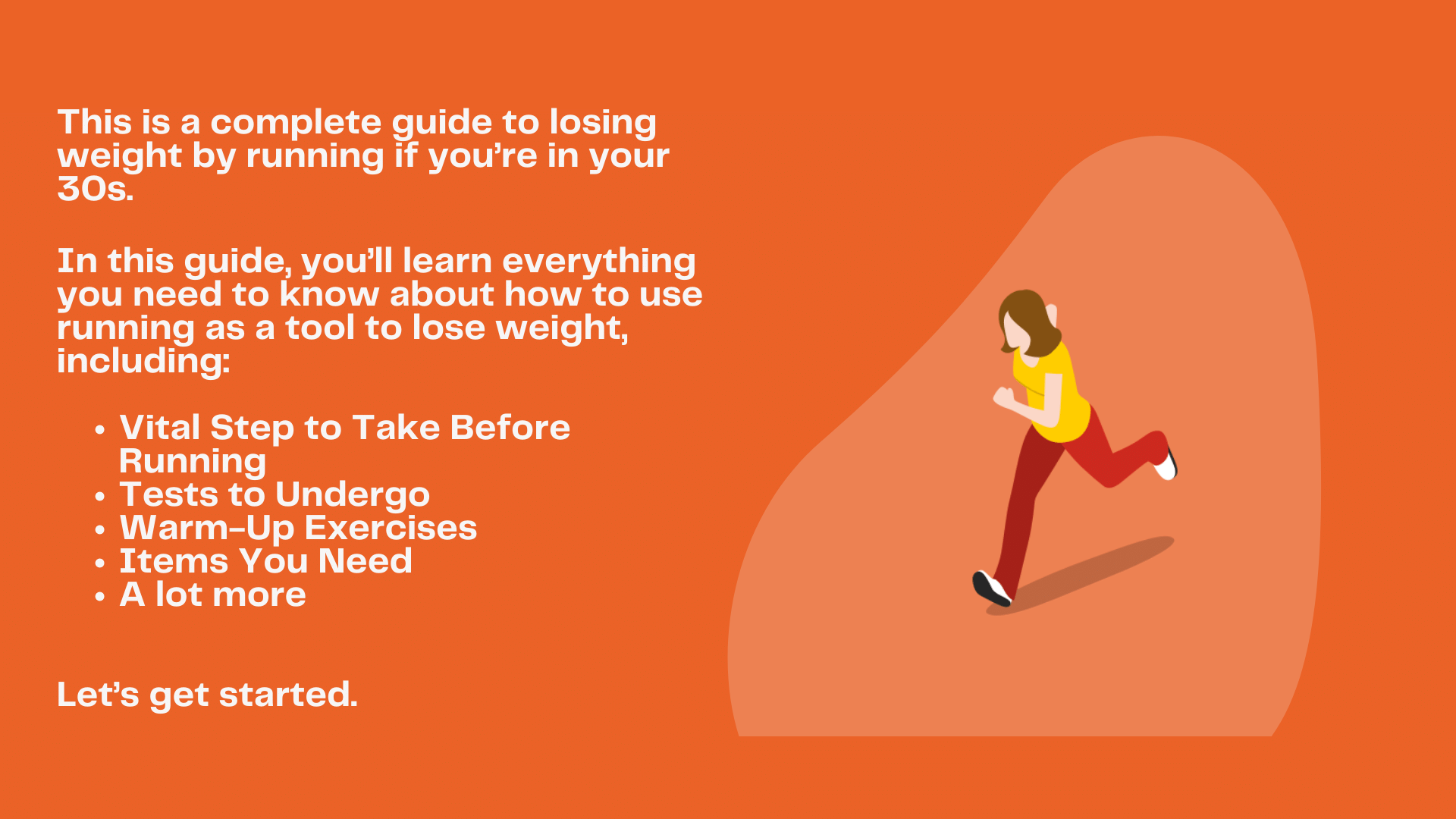
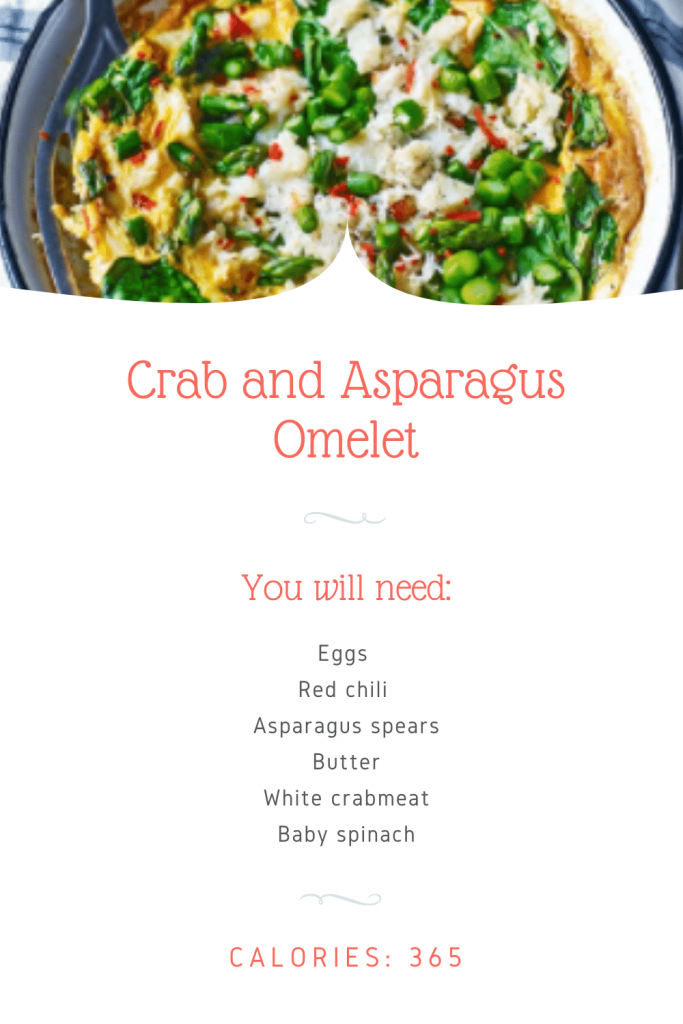



Leave a comment